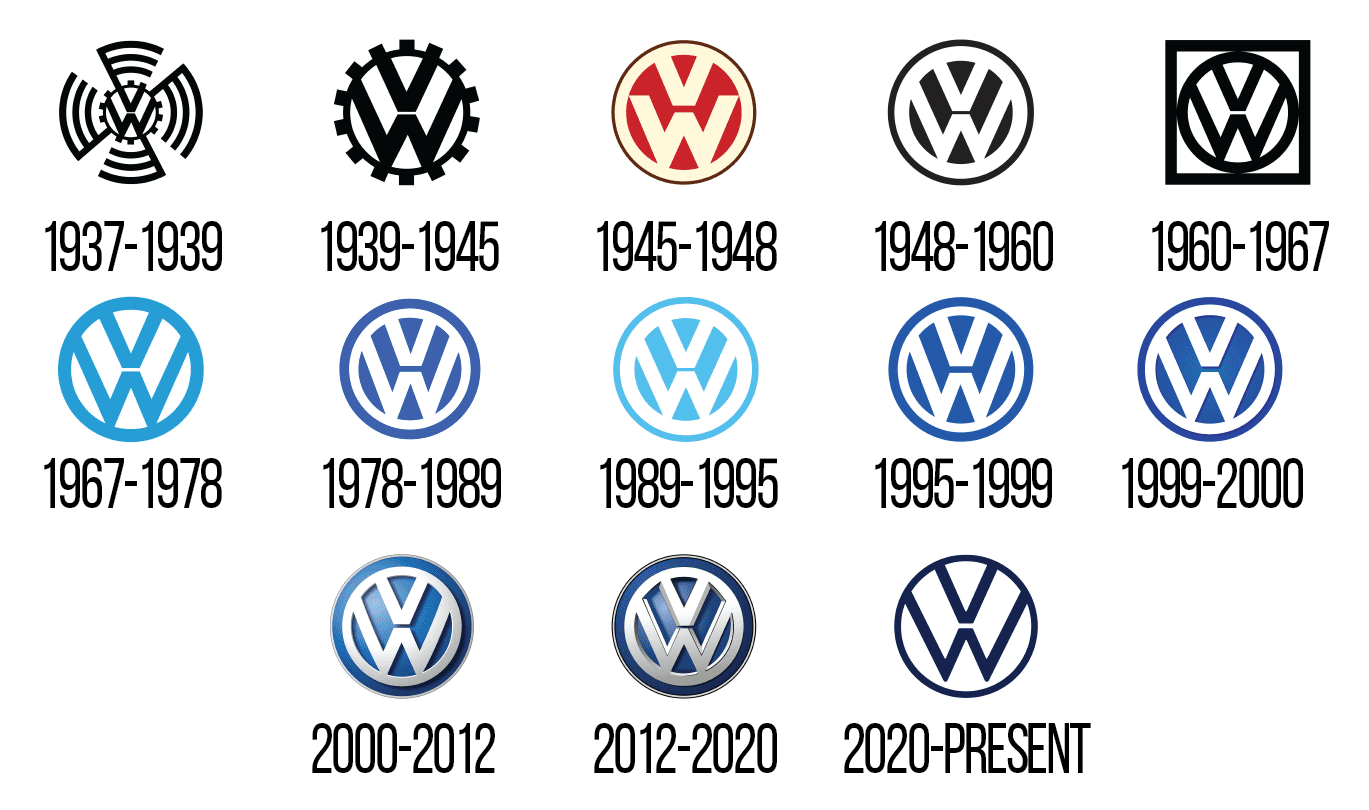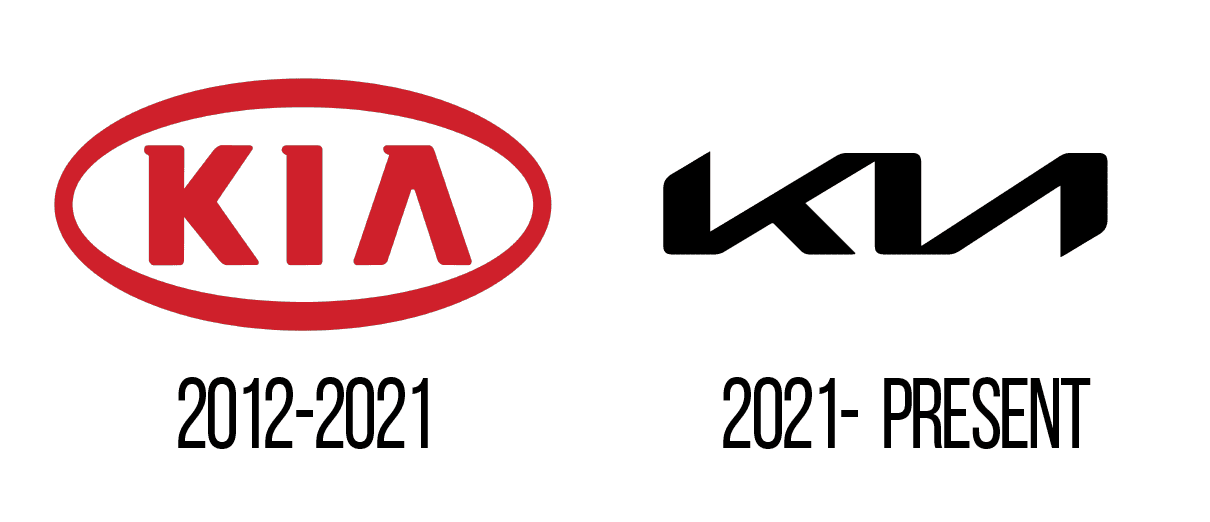The company logo is the first distinctive sign that influences a company’s branding; it is its identity. It’s what it relies on to express itself every day. Making changes to this visual identity is no small task. Indeed, refreshing a logo is a strategic approach that isn’t done on a whim.
There are several reasons that drive companies to give their logo a makeover: repositioning, international expansion, entering a new market, infusing new energy into the brand, aligning the company’s brand image with the market dynamics, etc. All of these approaches serve the goal of renewal and a fresh start.
Volkswagen
In the digital age of big data and the connected generation, various automobile manufacturers have tried to simplify and modernize their logos. The common factor among all these changes is the transition to the digital era. In fact, Klaus Bischoff, the head of design at Volkswagen, stated regarding the new logo unveiled in 2019: “ This name change also heralds Volkswagen’s entry into the digital era, transforming our classic logo into a brand that can be easily displayed digitally on devices and applications”.

Toyota
It’s in the same vein that Toyota unveiled its new logo in July 2020, transitioning to a simple 2D design. The goal of the company’s leaders was to convey an image of simplicity, transparency, and modernity while adapting to both physical and digital environments. According to Didier Gambart, Vice President, Sales, Marketing, and Customer Experience at Toyota Motor Europe “ We developed this new visual identity with an eye to the future. Our goal was to contribute to a better customer experience, enabling them to follow Toyota’s developments in terms of electrified vehicles, mobility services, and online sales. The design has been re-imagined to improve communication with our customers, which they will experience for the first time with the launch of the new Yaris Hybrid, the 4th generation of our compact car”

KIA
Automakers aim to project a modern image consistent with a constantly evolving world and the rise of hybrid and electric models. In January 2021, KIA launched its new logo to embody this evolution. In a press release, KIA unveiled the brand’s new signature “Movement that inspires” along with a new logo that “combines elements of ‘symmetry,’ ‘rhythm,’ and ‘uplift,’ reflecting Kia’s new spirit and commitment to its customers”. Ho-Sung SONG, President and CEO of Kia, stated that “The automotive industry is currently experiencing a period of rapid transformation, and Kia is taking proactive steps to steer and adapt to these changes effectively. Our new logo reflects our firm determination to inspire our customers as their mobility needs evolve and encourage our employees to tackle the challenges we face in a rapidly changing industry.

Peugeot
In the first quarter of 2021, Peugeot also embraced this wave of changes. By upgrading an old logo from 1960, Peugeot interacts with its past and future. Faced with global competition, especially from Germany, the French automaker has been working for several years to revitalize its brand and, more importantly, to move up the market. We also see in the video campaign a desire to internationalize the brand by including several ethnicities and targeting a younger audience.

En résumé
A logo and visual identity change represents a break between the past and a fresh start for the company: new positioning, new technologies, new target audiences, new objectives etc. Automakers are aware that the market is not static, and consumer needs and expectations have evolved. Generations Y and Z are important targets for automakers. Their needs in terms of image, technology, environmental preservation, freedom, among others, require a renewal of the visual identity in a dynamic and modern perspective, while still being grounded in experience and history.


